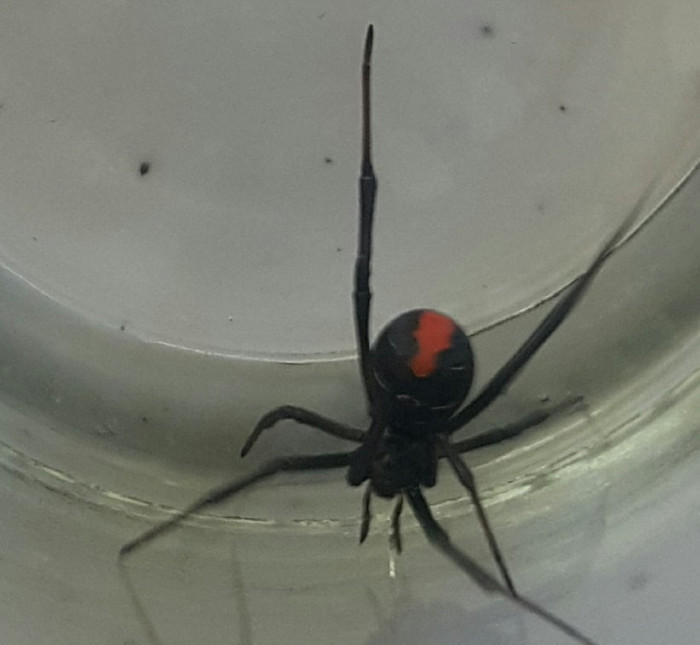Are redbacks growing in numbers?
Rowan Schindler
15 April 2021, 5:45 PM
 Locals have reported increased sightings of redback spiders in Central Otago with the species now considered well-established in New Zealand.
Locals have reported increased sightings of redback spiders in Central Otago with the species now considered well-established in New Zealand. Redback spiders are becoming a common sight in Central Otago, with the Australian native spider now being a well-established species in Aotearoa New Zealand.
Clyde’s Peter Henderson says he found a redback sitting in his lounge on a couch.
“We found this not so welcome guest sunning itself on a couch in our lounge in Sunderland St, Clyde,” Peter says.
“When you see one there's lots more around.
“Be careful, we lived with these and other creepy crawlies in Australia. Over there we had geckos to keep their numbers down but not so lucky here.
“You need to check on and under outdoor furniture, BBQ covers etc before using and be mindful of dark places inside the house like behind curtains, under cabinets etc.
“Spraying doorsteps and window ledges with surface spray helps to keep them out of the house.”
The redback spider (Latrodectus hasselti) is native to Australia but is a non-native species in Aotearoa New Zealand.
It is easily recognisable by its black body (occasionally brownish) with a prominent red/orange stripe on its abdomen.
The red/orange stripe on its abdomen distinguishes it from the false katipo spider. Redback spider females measure about 1cm in body length while the male is smaller, being only 3mm to 4mm in body length.
The male redback is light brown, with white markings on the upper side of the abdomen and a pale hourglass marking on the underside. It does not have the telltale redback.
Males also are shorter-lived, surviving several months compared to the females' two or three years.
One Australian study found the female ate the male reproductive partner in 65% of observed matings.
Webs consist of a tangled, funnel-like upper retreat area from which vertical, sticky catching threads run to ground attachments.
The redback spider favours proximity to human habitation, with webs being built in dry, sheltered sites, such as among rocks, in logs, shrubs, junk-piles, sheds, or toilets.
Redbacks can survive temperatures from below freezing point to 40 °C (104 ºF), though they do need relatively warm summers, with temperatures of 15 to 25 °C (59 to 77 ºF) for two to three months, to survive and breed.
Redback Spiders are less common in winter months.

Peter Henderson’s uninvited house guest - Latrodectus hasselti - the Australian Redback Spider.
An Otago Regional Council (ORC) spokesperson says redback spiders are not listed in the ORC Pest Plan as a pest that ORC manages or has rules for in Otago, based on what they could see from previous reporting.
The spiders have been reportedly found as far away as Tokyo, London and parts of the USA. Most likely as an accidental stowaway in exports from Australia.
Cromwell-based pest controller, Patricia Hilton, of Allpest Pest Management, says she regularly sprays houses in Cairnmuir and Bannockburn that have redbacks.
“Fascinating little creatures,” she says. “Am definitely seeing more, than say, five years ago.”
“This summer I have had them in the Cromwell industrial area and Summerfields area too.
“I have never had a customer with them inside their home.
“Typically live outside in a small area such as under plant pots/rattan type garden furniture/metal decorative items in gardens.
“Also found one and all her eggs in one of my rodent bait stations in the industrial area this summer.
“I haven't done any redback work in Queenstown/Arrowtown yet.
“I have never come across anyone who has been bitten.”
A Ministry for Primary Industries (MPI) spokesperson says redbacks are considered to be established in New Zealand and have been recorded here since the 1980s.
“Populations are known from Central Otago and New Plymouth, and there have been redbacks reported from several other locations in both the North and South Islands.
The spokesperson says MPI is not monitoring redback spiders.
For information on redback spiders from a health perspective, visit Ministry of Health’s webpage.


